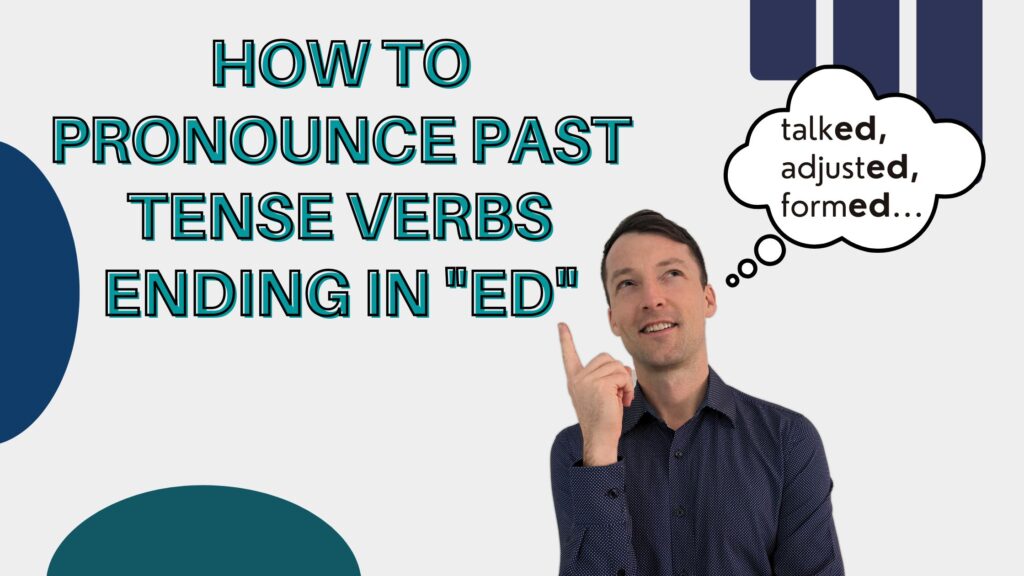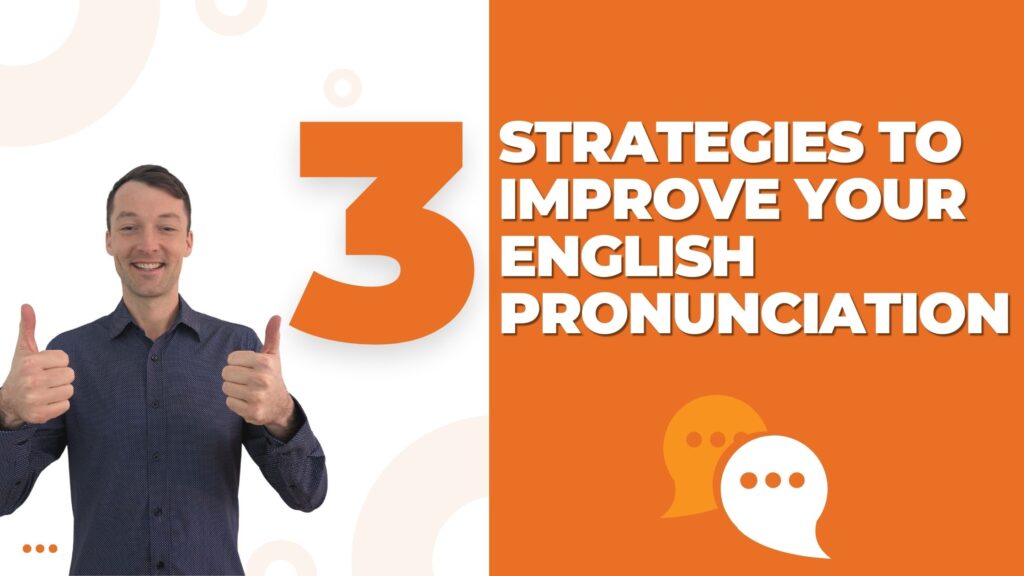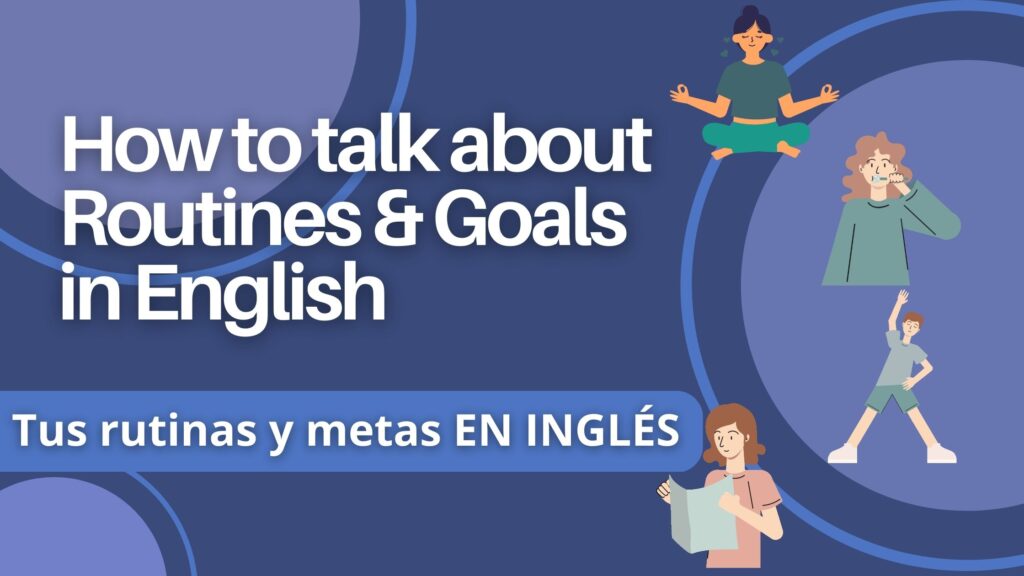Did you know there are three distinct ways to pronounce the past tense ‘ed’ sound in English?
Have you ever noticed these three distinct sounds when talking in the past tense (and when pronouncing adjectives that end in ‘ed’)? ¿Te has fijado alguna vez en que hay tres formas distintas de pronunciar el sonido “ed” en los verbos ingleses en tiempo pasado (y en los adjetivos terminados en “ed”)?
For Example:
- Demanded, sounds like = ‘id’
- Talked, sounds like = ‘t’
- Hugged, sounds like = ‘d’
Did you know there are specific rules we can follow to make sure we are pronouncing the ‘ed’ correctly?
¿Sabías que hay reglas específicas que podemos seguir para asegurarnos de que pronunciamos la “ed” correctamente?
By the end of today’s lesson, students will be able to / Al final de la lección de hoy, los participantes serán capaces de:
- Learn to recognize the three ways to pronounce ‘ed’ / Distinguir entre las tres formas de pronunciar “ed
- Learn to pronounce ‘ed’ sounds in words and connected speech / Producir sonidos “ed” en palabras y en el discurso conectado.
Watch this English Quick Tip Lesson to learn more:
What are the three ways to pronounce ‘ed’ in past tense verbs?
- Think for a moment. Think of all the past tense verbs you know ending in ‘ed.’ What do they sound like? / Piensa por un momento en todos los verbos en pasado que conozcas terminados en “ed”. ¿Cómo suenan?
- Can you identify the three distinct sounds? / ¿Puedes identificar los tres sonidos distintos?
Examples:
- Listen to the following three words. They all end in ‘ed’ but they have different ‘ed’ sounds. Can you hear a difference in the final sound? / Escucha las tres palabras siguientes. Todas terminan en “ed”, pero tienen diferentes sonidos. ¿Oyes alguna diferencia en el sonido final?
- Commented (id)
- Baked (t)
- Formed (d)
- How did you do? Did you notice that… / ¿Cómo te fue? ¿Te diste cuenta de que…
- The first word, commented, ends in an ‘id’ sound?
- The second word, baked, ends in a ‘t’ sound?
- The third word, formed, ends in a ‘d’ sound?
Examining and Practicing Each Sound
The three distinct sounds are id, t, and d. Watch the lesson above to practice each sound individually. Don’t worry when and why to say each sound. Just think about the sound itself. Remember to pay attention to mouth placement.
Los tres sonidos distintos son id, t y d. Reproduce el video arriba para practicar rápidamente cada sonido por separado. No te preocupes de cuándo y por qué pronunciar cada sonido. Piensa sólo en el sonido en sí. Recuerda prestar atención a la colocación de la boca.
When to use each sound – Cuándo utilizar cada sonido
| When to say ‘id’ | When to say ‘t’ | When to say ‘d’ |
| We say ‘id’ when the final sound before ‘ed’ is: /t/ or /d/ | We say ‘t’ when the final sound before ‘ed’ is unvoiced or voiceless (Sonido Sordo) | We say ‘d’ when the final sound before ‘ed’ is voiced (Sonido Sonoro) |
| For example in the words below, each word’s final sound (before ‘ed’) is always a ‘t’ sound, or a ‘d’ sound: Por ejemplo, en las palabras siguientes, el sonido final de cada palabra (antes de “ed”) es siempre un sonido “t” o un sonido “d“: – Adjusted – Commented – Eliminated – Decided – Defended – Demanded | For example in the words below, each word’s final sound (before ‘ed’) is always unvoiced / Sonido Sordo: – Baked – Talked – Walked – Laughed – Coughed – Passed – Washed – Watched What does “unvoiced” mean? ¿Qué significa “sonido sordo“? Unvoiced sounds are sounds that: – DO NOT require vocal cord vibration / NO requieren vibración de las cuerdas vocales – You can tell if a sound is unvoiced by touching your throat / Puedes saber si un sonido es sordo tocándote la garganta – If you don’t feel a vibration, it is “unvoiced” / Si no sientes una vibración, es “sonido sordo” | For example in the words below, each word’s final sound (before ‘ed’) is always voiced / Sonido Sonoro: – Smelled – Hugged – Grabbed – Planned – Assigned – Formed – Canceled – Classify (ied) – Modify (ied) – Notify (ied) What does “voiced” mean? ¿Qué significa “sonoro“? Voiced sounds are sounds that: – DO require vocal cord vibration / Requieren la vibración de las cuerdas vocales – You can tell if a sound is voiced by touching your throat. / Puedes saber si un sonido es sonoro tocándote la garganta – If you feel a vibration, it is “voiced” / Si sientes una vibración, es “sonoro” |
Now that we have practiced each sound individually, do you notice any patterns? / Ahora que hemos practicado cada sonido individualmente, ¿notas algún patrón?
- What rules/patterns do you see with ‘id’? / ¿Qué reglas/patrones ves con “id“?
- What rules/patterns do you see with ‘t’? / ¿Qué reglas/patrones ves con “t“?
- What rules/patterns do you see with ‘d’? / ¿Qué reglas/patrones ves con “d“?
Watch the lesson to get all the details about these 3 pronunciation tips. Don’t forget to download the lesson notes, practice activities and vocabulary / Ve la lección para conocer todos los detalles sobre estos 3 consejos de pronunciación. No olvides descargar los apuntes de la lección, las actividades prácticas y el vocabulario.
¡Te toca a ti! Let’s practice…
- Now it’s your turn to practice!
- Intercambio members, try practicing with your language partner / Miembros de Intercambio, intenten practicar con su compañero de idioma.
- Download the materials and activities! / ¡Descarga los materiales y actividades que encuentras arriba!
- In the comments, write an example of a past tense sentence. Escribe un ejemplo en el pasado en los comentarios.





